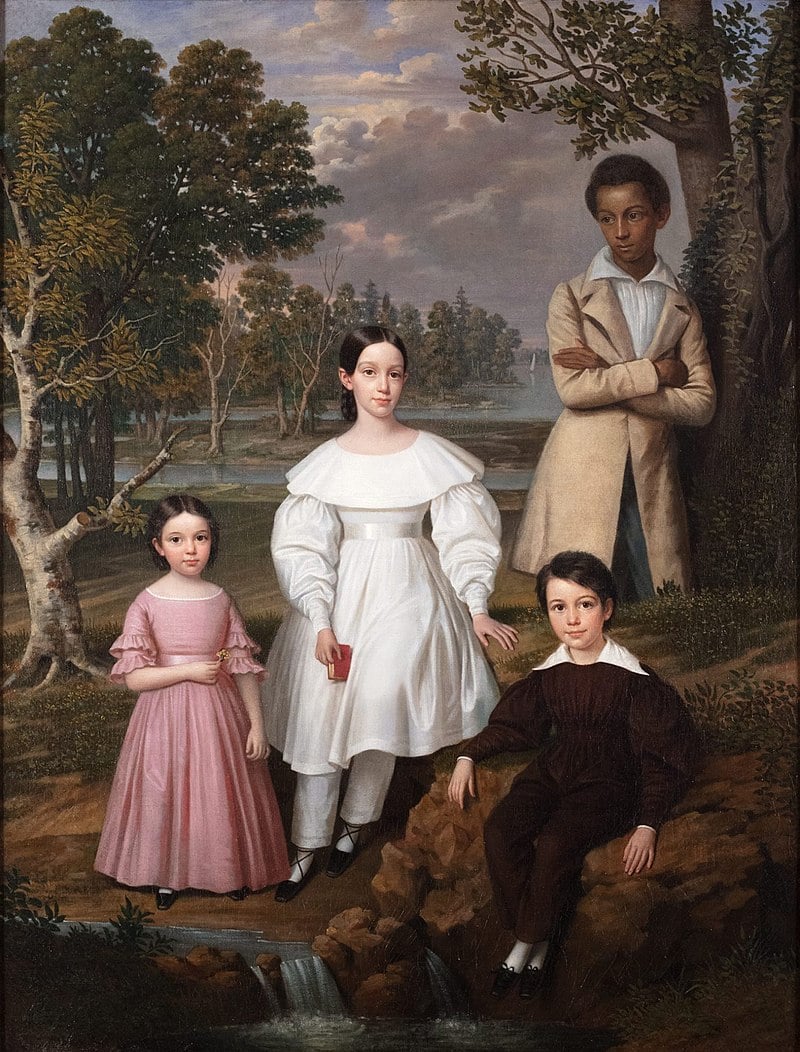
The Metropolitan Museum of Art in New York has just acquired the first real portrait of a named Black slave from the American South, a witness to the oft-discussed chapter of American slavery. The painting will be displayed in the American Wing beginning in the autumn.
Dated around 1837, the painting portrays the children of the family with Bélizaire, an enslaved fifteen-year-old boy. The work is attributed to Jacques Guillaume Lucien Amans, a French painter residing in New Orleans. Elizabeth, Léontine, and Frederick Jr. are pictured in their garden and looking at the artist, while Bélizaire stands above them, looking away deep in thought with his arms crossed.
The depiction of the boy, shown in an individualistic and realistic way, along with the children of the family is very rare. Indeed, the figure of Bélizaire was painted over, possibly during the late 19th century or around 1900, during a period of renewed racial violence in the United States.
A History of Slavery
The story of Bélizaire and his mother, as well as his enslavers, has been researched by Katy Morlas Shannon, a historian.
Bélizaire and his mother, Sally, were acquired by the Freys in 1828. Sally was probably the house cook, and Bélizaire also worked at home. Frederick Frey was a German merchant, who had moved to the New Orleans French Quarter to live with his wife, Coralie D’Aunoy Favre, from a local and wealthy family.
Soon after the portrait was painted, the three Frey children had died. The family had encountered massive debt and sold Bélizaire in 1857. He went to work on a large sugar plantation in Louisiana, the Evergreen Plantation.
The Hidden Painting
Katy Morlas Shannon was hired by an art collector who had gotten the painting from an antiques dealer in Virginia. The painting came from a Christie’s auction where the piece from the collection of the New Orleans Museum of Art was being sold.
Bélizaire’s image was still hidden, and the New Orleans Museum claimed that it hadn’t displayed the painting because of its poor condition and the uncertainty of the subjects.
However, the passion of collector Jeremy K. Simien gave new life to the portrait. He had it restored and investigated the history of the subjects, including the slave Belizaire.
Judging by the type of paint used and the cracks on it, art conservation specialist Craig Crawford guesses Bélizaire was painted out around 1900, during a time of deepening segregation and violence toward Black people in the American South.
“No white person of any social standing in New Orleans at that time would have wanted a Black person portrayed with their family on their wall,” Shannon has said.
Although the realities of slavery have been buried in the sands of time, history can at times give us a peek into how things actually were such as with this portrait of the family children and their slave. In the Antebellum South, the capillary phenomenon of slavery had led most families who could afford it to acquire slaves.
The distribution and mingling of slaves with the families they served led to some of the slaves being freed or educated. While the depiction of plantation life is often imagined rather than documented explicitly, snippets like this one are precious.
See all the latest news from Greece and the world at Greekreporter.com. Contact our newsroom to report an update or send your story, photos and videos. Follow GR on Google News and subscribe here to our daily email!



